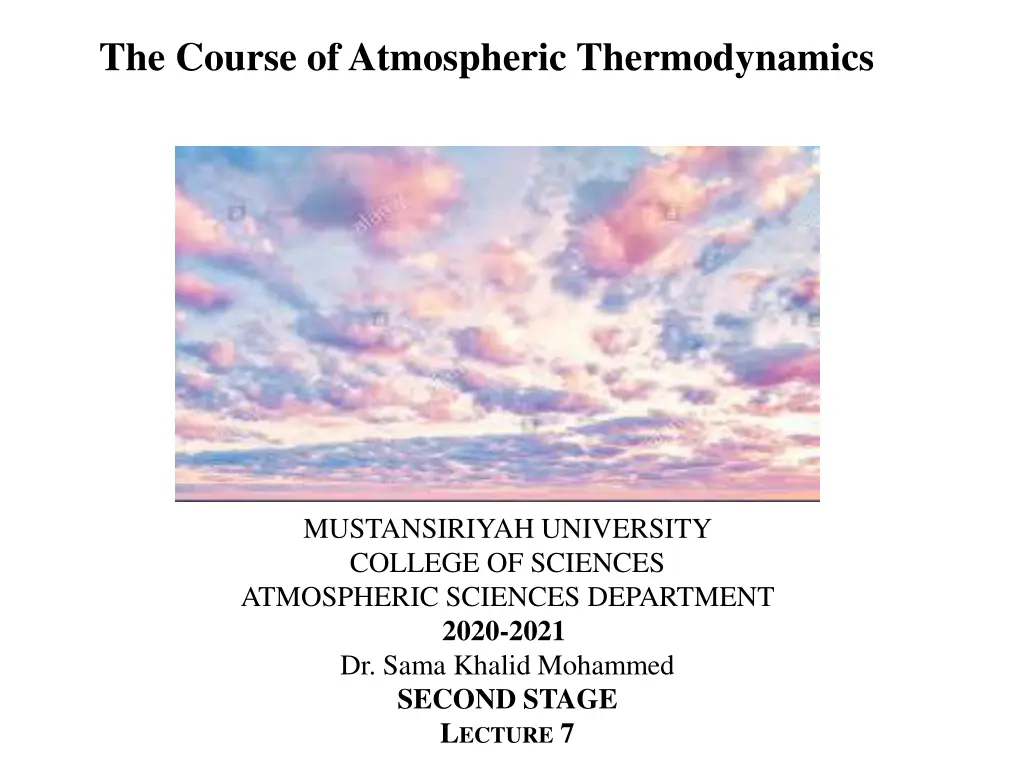
Understanding Atmospheric Thermodynamics and Heat Engine Efficiency
Explore the concepts of the Second Law of Thermodynamics, the Carnot Cycle, and the relevance of heat-engine efficiency in atmospheric processes such as tropical cyclones and monsoons. Discover how these processes can be viewed as heat engines operating between temperature reservoirs.
Download Presentation

Please find below an Image/Link to download the presentation.
The content on the website is provided AS IS for your information and personal use only. It may not be sold, licensed, or shared on other websites without obtaining consent from the author. If you encounter any issues during the download, it is possible that the publisher has removed the file from their server.
You are allowed to download the files provided on this website for personal or commercial use, subject to the condition that they are used lawfully. All files are the property of their respective owners.
The content on the website is provided AS IS for your information and personal use only. It may not be sold, licensed, or shared on other websites without obtaining consent from the author.
E N D
Presentation Transcript
The Course of Atmospheric Thermodynamics MUSTANSIRIYAH UNIVERSITY COLLEGE OF SCIENCES ATMOSPHERIC SCIENCES DEPARTMENT 2020-2021 Dr. Sama Khalid Mohammed SECOND STAGE LECTURE 7
THIS LECTURE INCLUDING THE FOLLOWING ITEMS The Second Law of Thermodynamics THE CARNOT CYCLE Heat-engine efficiency is very relevant to atmospheric processes
THE CARNOT CYCLE Schematic of the hurricane viewed as a Carnot engine of the classical Carnot cycle in thermodynamics. Leg 1 represents the isothermal expansion, namely gas is been heated and pressure is reduced, q e increases Leg 2 represents an adiabatic expansion where there is no heat exchange and thus pressure is reduced but temperature is decreasing, keeping q e constant. Leg 3 represents an isothermal compression where gas is cooled, with pressure increased and thus q e decreases. Leg 4 represents an adiabatic compression where there is no heat exchange and pressure is increased while q e keeps constant. https://www.researchgate.net/publication/308608010_Hurricane_Dynamics/figures?lo=1
Heat-engine efficiency is very relevant to atmospheric processes Tropical cyclones, the Hadley circulation, monsoons, etc. can all be thought of as heat engines that operate between a high temperature reservoir (the Tropical oceans) and a low temperature reservoir (the upper troposphere), and convert the heat into kinetic energy. https://www.nature.com/articles/44287
Heat-engine efficiency is very relevant to atmospheric processes A knowledge of the efficiency of these heat engines can allow us to place upper limits on the amount of kinetic energy that can be produced. However, atmospheric heat engines, like other real-life heat engines, are not reversible. To extend the concept of heat engines to real-life situations requires us to use the concept of non-equilibrium thermodynamics






















